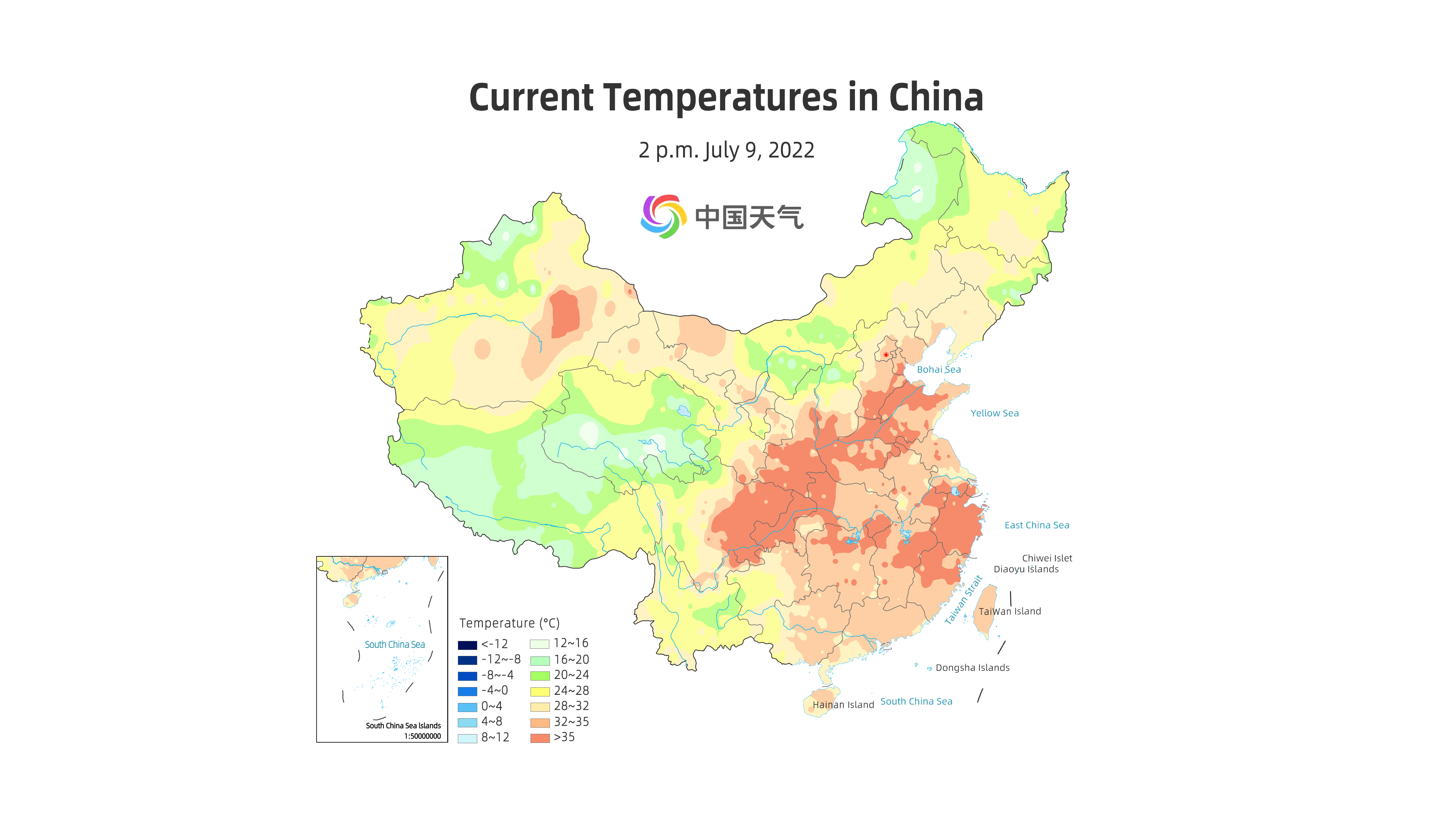Since July 6, many parts of China have experienced high temperatures, with temperatures in some places breaking records.
Xinjiang, the eastern part of northwest China, the eastern part of southwest China, northern China, the regions from the Yangtze to Huaihe rivers, Zhejiang Province and other places have seen high temperatures above 35 degrees Celsius.
On July 7 and 8, nearly 40 national meteorological stations in the Gansu, Sichuan, Shaanxi provinces and other regions broke the highest temperature records for July. In Henan, Shanxi, Chongqing, Fujian, Shandong, Shaanxi, Shanghai, Beijing, Zhejiang and other places, 80 percent of the surface temperature exceeded 40 degrees Celsius.

A map of the current temperatures in China at 2 p.m. on July 9, 2022. /Weather China
A map of the current temperatures in China at 2 p.m. on July 9, 2022. /Weather China
According to the National Climate Center (NCC), this heatwave has a wide range, strong intensity and long duration. Affected by the movement of subtropical high to the west and north, the high temperature will further expand in the future, and there will be a persistent high temperature in most parts of southern China.
"Widespread hot weather in summer is normal, but this year's has been extreme in intensity and duration. For example, temperatures in Sichuan and Gansu provinces have broken record highs," said Fu Jiaolan, chief forecaster at the NCC.
Many parts of the world, like Spain, Italy, Norway and Japan, are also suffering from heatwaves.

In meteorology, temperatures above 35 degrees Celsius are referred to as "high-temperature weather," and if the highest temperature exceeds 35 degrees Celsius for several consecutive days, it is called a "heatwave." /VCG
In meteorology, temperatures above 35 degrees Celsius are referred to as "high-temperature weather," and if the highest temperature exceeds 35 degrees Celsius for several consecutive days, it is called a "heatwave." /VCG
In recent years, extreme weather events have occurred more frequently, and the impact of global warming cannot be ignored.
The current level of global warming, created by human-caused climate change, has made the heatwaves 30 times more likely, according to the World Weather Attribution group's study released on May 24. If global heating increases to 2 degrees Celsius more than pre-industrial levels, heatwaves could occur twice in a century and up to once every five years.
In terms of the long-term average, the average global temperature is now about 1.1 degrees Celsius warmer than the pre-industrial average, and the world faces a 50 percent chance of warming of 1.5 degrees Celsius above pre-industrial levels, if only briefly, by 2026, the World Meteorological Organization said on May 9.
(If you want to contribute and have specific expertise, please contact us at nature@cgtn.com.)

